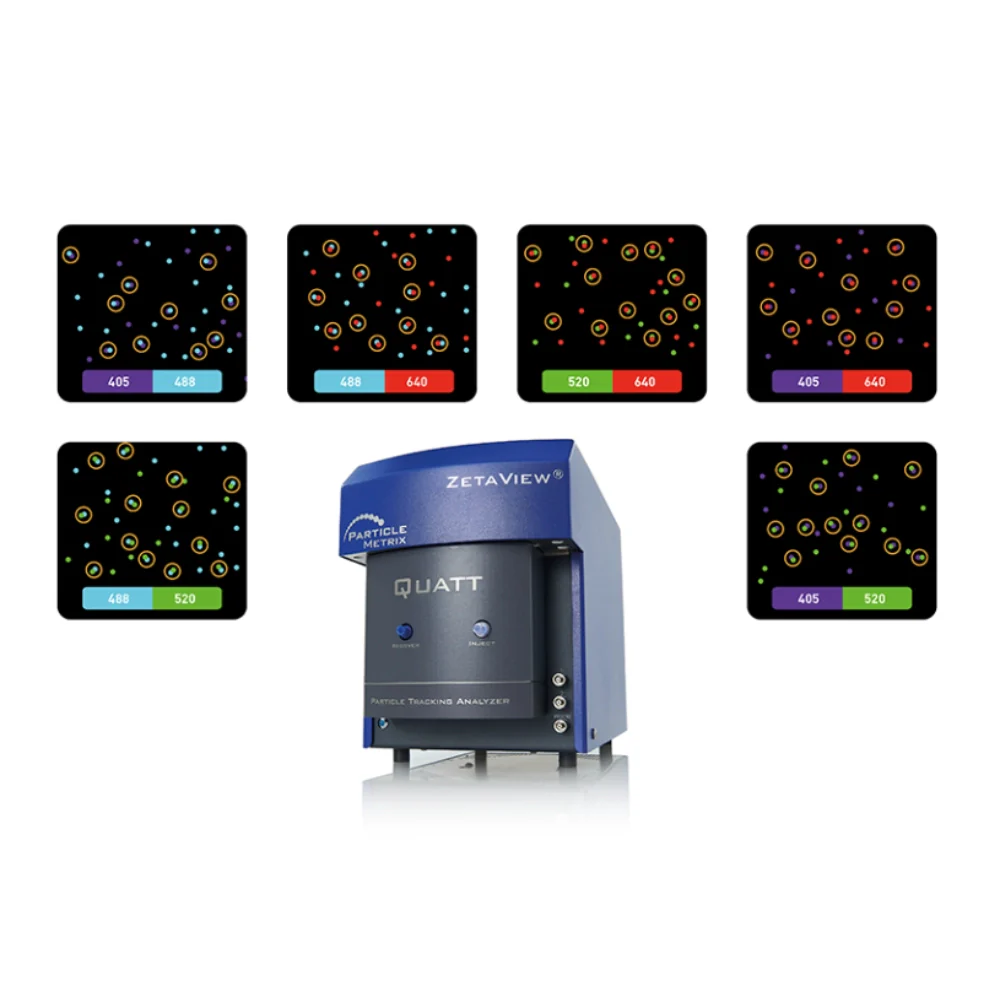ZetaView® x30 | Particle Tracking Analyzer
Nanoparticle Tracking Analyzer
Biological nanoparticles such as extracellular vesicles (EVs), exosomes, viruses or virus-like particles are of growing interest in life sciences and nanomedicine. With our Nanoparticle Tracking Analyzer, ZetaView®, particles in a physiological buffer can be measured individually.
You can watch what you measure in a video. With the ZetaView® x30 series, a major step has been taken towards convenience and speed for fluorescence studies of EV-antibody conjugates. ZetaView® combines the precision of new generation lasers for perfect illumination of NTA channels and very short switching times with smart software – indispensable prerequisites for the challenging task of the quantification of biomarker colocalization scores.

Description
Key Applications
Our Nanoparticle Tracking Analyzer, ZetaView® x30, enables precise characterization of a wide range of bio-nanoparticles across various scientific and industrial fields.
Bio-nanoparticles
- Extracellular Vesicles (EVs)
- Exosomes
- Liposomes & Micelles
- Protein Agglomerates
- Viruses & Virus-Like-Particles (VLPs)
- Drug DeliveryFluorescent-labelled NPs
Low Concentration Samples
- Nanobubbles
- Nanometals
- Trace Particles
- Quantum Dots
Multi-Fluorescence NTA
Particle Metrix offers the versatility of the ZetaView® Nanoparticle Tracking Analyzer, providing advanced Nanoparticle Tracking Analysis on its well-proven platform PMX-x30, while keeping the instrument upgradable from one laser to four lasers. Changes between 405, 488, 520, or 640 nm excitation lasers and between scattering and fluorescent modes are automated.
The movement and patterns of particles emitting scattered or fluorescent light are recorded in standard NTA or in Z-NTA surface charge electrophoresis mode. The new design of the PMX-x30 Nanoparticle Tracking Analyzer family with a fixed cell assembly combines enhanced performance and reliable, error-free measurements with simplicity and fast, easy instrument cleaning.
ZetaView® Colocalization NTA Feature (C-NTA)
In the colocalization feature, measurements are performed in channel pairs enabling the user to phenotype fluorescently labelled nanoparticles at the next level. The colocalization feature is now available for QUATT systems offering flexibility of up to six excitation wavelength pair combinations and even more filter settings.
Concentration of fluorescently labelled bionanoparticles and colocalization scores can be determined from combinations of membrane dyes and/or fluorescently labelled antibodies. Read more about C-NTA and details about phenotyping of EVs and phages.
Applications
- Phenotyping of extracellular vesicles (EVs)
- Characterization of labelled viruses, phages and virus-like particles (VLPs)
- Cargo determination of vesicles or micelles
- Q-dots
- Multi-fluorescent NP
- and many more…
| MONO | TWIN | QUATT | |
|---|---|---|---|
| Size | ✓ | ✓ | ✓ |
| Concentration | ✓ | ✓ | ✓ |
| Zeta potential | optional | optional | optional |
| Fluorescence | optional | 2 long pass filters | 4 long pass filters |
| Laser | 405 or 488 or 520 or 640 nm | 405 & 520 nm or 405 & 640 nm or 488 & 640 nm or 520 & 640 nm | 405 and 488 and 520 and 640 nm |
| Custom filter support* | optional | ✓ | ✓ |



